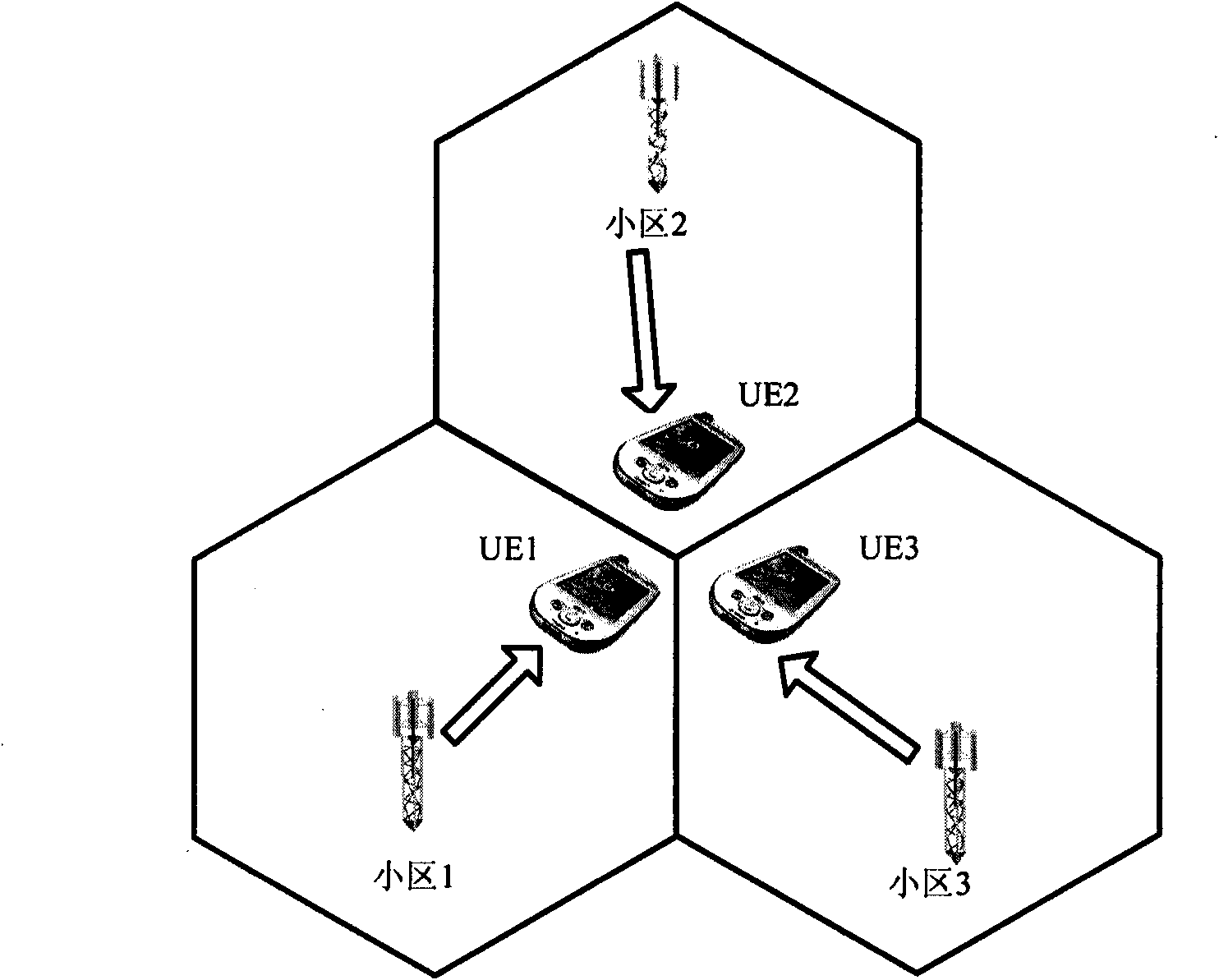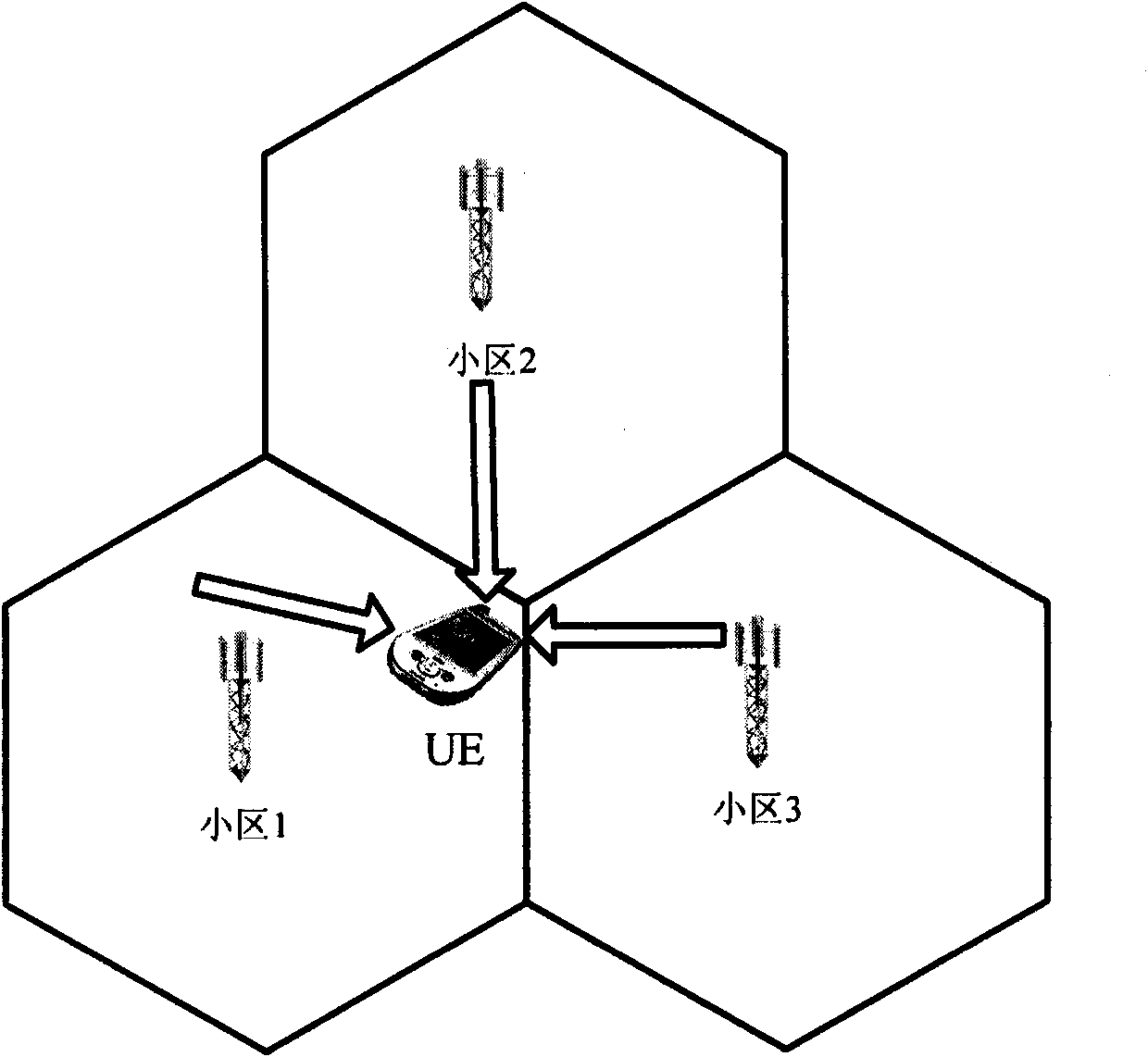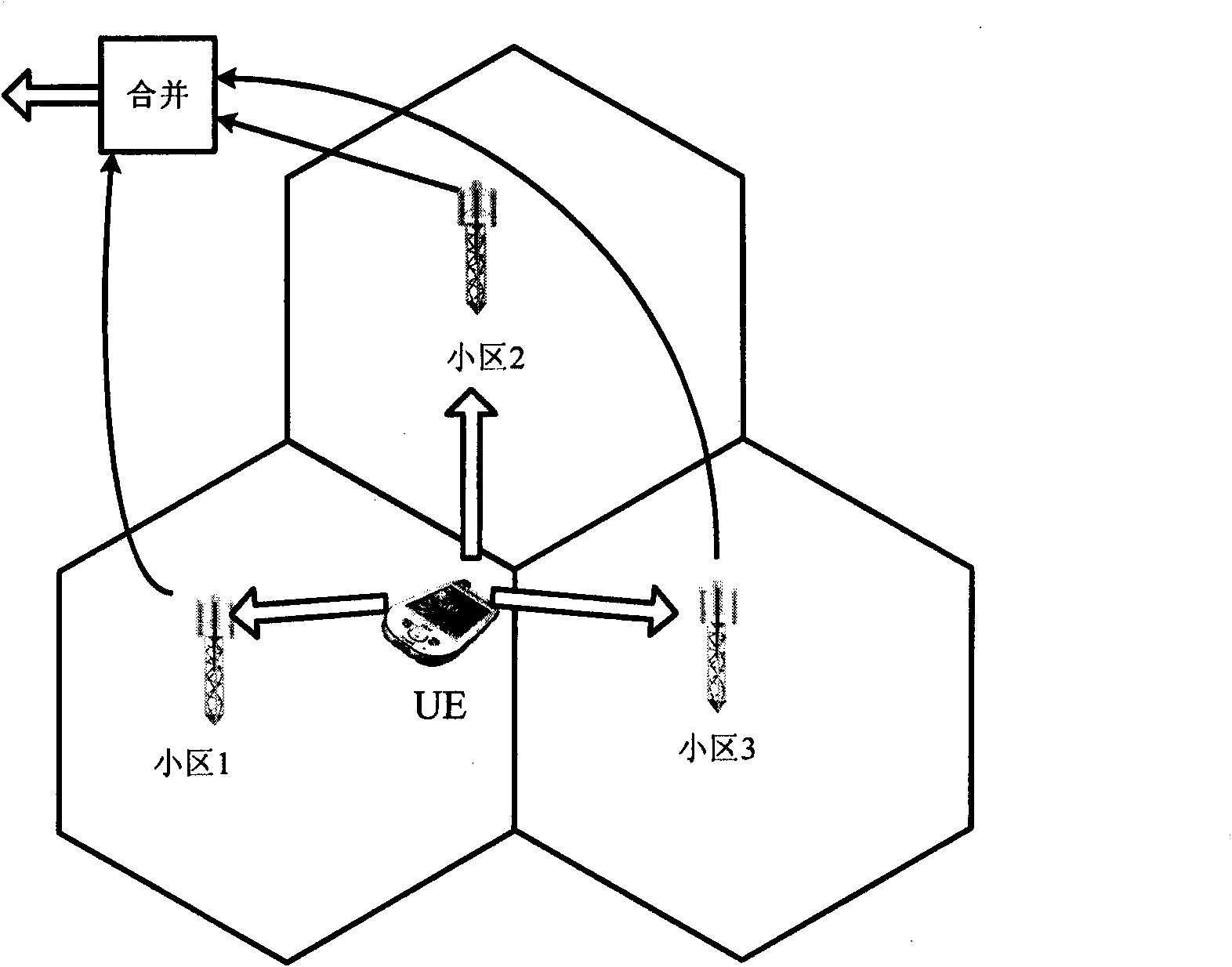Method and device for configuring uplink reference signal of multipoint cooperative transmission
A multi-point coordination and reference signal technology, applied in transmission path sub-channel allocation, pilot signal allocation, wireless communication, etc., can solve problems such as interference, achieve enhanced accuracy, improve system signal performance, and reduce SRS signal interference Effect
- Summary
- Abstract
- Description
- Claims
- Application Information
AI Technical Summary
Problems solved by technology
Method used
Image
Examples
specific Embodiment 1
[0054] 1. Set the cell set A as a CoMP SRS group, and the cells in the cell set A communicate with each other, or determine the same CoMP SRS OFDM symbol set M through pre-configuration. The SRS of the CoMP UE can only be allocated to OFDM symbols in the set M of CoMP SRS OFDM symbols. The cell where the CoMP UE resides belongs to cell set A.
[0055] 2. Each cell in the cell set A communicates with each other, or determines the SRS root sequence number of the same CoMP UE through a kind of agreement. The SRS of the CoMP UE can only use this CoMP SRS root sequence number.
[0056] 3. Allocation of orthogonal SRS resources for different CoMP UEs. Orthogonal SRS resources can be obtained through time division multiplexing (TDM), frequency division multiplexing (FDM), code division multiplexing (CDM) or any combination of the above methods. One or more cells in the cell set A may jointly determine the SRS resource of a CoMP UE by exchanging information. For example, two cells...
specific Embodiment 2
[0059] 1. Set the cell set A as a CoMP SRS group, and each cell in it is assigned the same CoMP SRS OFDM symbol set M. SRS for CoMP UEs can only be allocated in these CoMP SRS OFDM symbols. The anchor cell of the CoMP UE belongs to cell set A.
[0060] 2. Cell set A allocates SRS root sequence numbers of at least two CoMP UEs. The SRS of the CoMP UE can only use the SRS root sequence number of the CoMP UE as described above.
[0061] 3. Allocation of orthogonal SRS resources for different CoMP UEs. Orthogonal SRS resources can be obtained through TDM, FDM, CDM or a combination thereof. One or more cells in the cell set A may jointly determine the SRS resource of a CoMP UE by exchanging information. SRS resources may include but not limited to SRS transmission time, frequency domain resources, root sequence number and cyclic shift.
[0062] 4. The cell judges whether the root sequence numbers of any two CoMP UEs are the same, if their SRS root sequence numbers are the same...
specific Embodiment 3
[0064] The CoMP SRS OFDM symbol sets M of cell 1 and cell 2 are the same. Furthermore, cell 1 and cell 2 configure and send the SRS of one CoMP UE on the same OFDM symbol. If the SRS resources of the CoMP UE are orthogonal to the SRS resources of other UEs in cell 1 and cell 2 (for example, by using different cyclic shifts of an SRS root sequence, or different SRS frequency domain resources, etc.), the CoMP The SINR of the UE's SRS in cell 1 is SINR=P SRS / N 0 . Here P SRS is the received power of the CoMP UE’s SRS received by cell 1, N 0 is the AWGN noise power. The SINR of the SRS signal of the CoMP UE received by the cell 2 can be calculated similarly. It can be seen that, after adopting the present invention, the SINR of the SRS is improved compared with the prior art. The SINR of the SRS directly affects the accuracy of the channel estimation generated by the SRS. The higher the SINR of the SRS, the better the quality of the channel estimate produced with the SRS....
PUM
 Login to View More
Login to View More Abstract
Description
Claims
Application Information
 Login to View More
Login to View More - R&D
- Intellectual Property
- Life Sciences
- Materials
- Tech Scout
- Unparalleled Data Quality
- Higher Quality Content
- 60% Fewer Hallucinations
Browse by: Latest US Patents, China's latest patents, Technical Efficacy Thesaurus, Application Domain, Technology Topic, Popular Technical Reports.
© 2025 PatSnap. All rights reserved.Legal|Privacy policy|Modern Slavery Act Transparency Statement|Sitemap|About US| Contact US: help@patsnap.com



